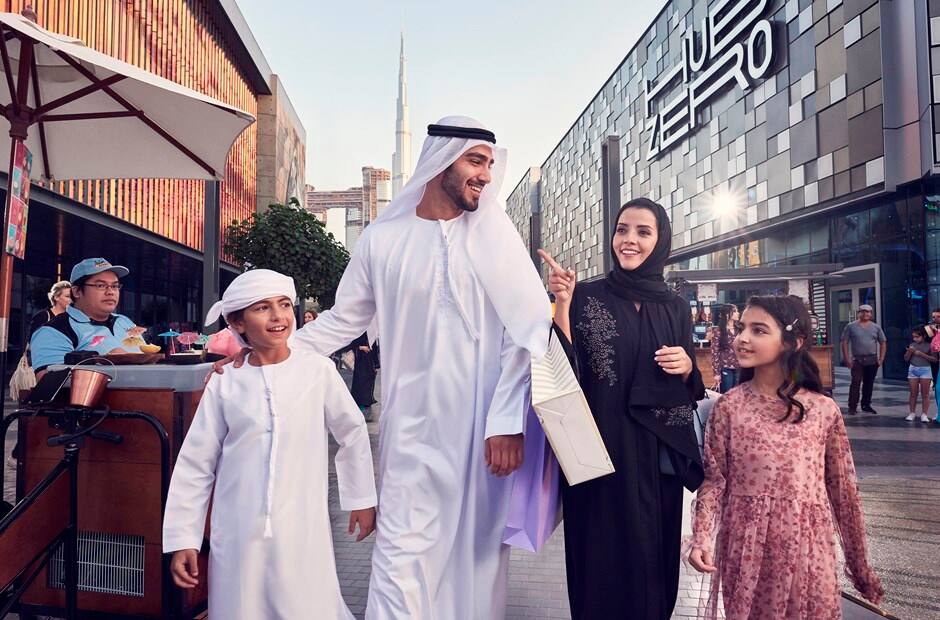
Local culture & heritage

Typical Emirati clothing
With around 200 nationalities represented in Dubai, how people dress is incredibly varied—yet the traditional attire of the UAE is bold and distinctive. You can see it all across the city.
Emirati national dress is a symbol of pride and identity that has been designed with the dual intent of providing comfort and adhering to religious beliefs. In Dubai, men wear an ankle-length, loose-fitting garment made of white cotton, known as a kandoora or dishdasha. A ghutrah covers the head and is held in place by the agal, a type of black cord. This garment was originally used to protect the face from the harsh desert environment
Traditionally, women in Dubai wear an abaya – a long, black flowing light coat over their clothing. This is worn over Western clothes or a traditional long-sleeved full-length dress known as a jalabeya. A black scarf called a shayla is often draped over the head.
Hospitality and etiquette
Hasan al-diyafa (what we know as ‘hospitality’) is an intrinsic part of the Bedouin lifestyle that can be traced back to the traditions of life in the desert. Many also consider that religious beliefs and honouring one’s guests go hand in hand – and these customs are very much alive in Dubai today. We explain the basics.
Marhaba: The Arabic word for ‘welcome’, used when entering someone’s home.
Salaam alaykum: ‘Peace upon you’ – to which you reply walaykum salaam.
Gahwa: Guests will often be served Arabic coffee before a meal. Remember to hand over your empty cup with your right hand.
Modesty: Visiting a local home? Consider loose, long clothing that covers your body. You would typically leave your shoes at the door.
Nose to nose: In the UAE, many Emirati men will touch noses or peck on the cheek when they first meet. Visitors are not expected to follow the tradition.
The majlis: Many homes have a reception room reserved for special occasions or entertaining guests. It would typically involve low seating and cushions, dating back to life in tents.
Hands and feet: Men would shake hands with everyone present, but be aware that some ladies may not wish to do so. When you sit, pointing your feet towards someone can be considered offensive.
Dinner: Evening meals would typically be served on a huge, round platter – be prepared to use your hands!
Dubai music, celebrations and festivities
Music: Music has historically been connected with poetry, with traditions such as al shila and al wana combining music and verse. In terms of modern music, Dubai now has a thriving scene that includes both homegrown artists strumming at local cafés, and international superstars selling out arenas and concert halls across the city.
Dance: Visitors may be lucky to see men lined up in a row, performing ayyala, holding thin bamboo canes and moving in sync to a percussive rhythm. Other forms of dance include razfa, which often involves reciting lines of poetry and handling other objects, such as daggers or rifles.
Poetry: Forms of poetry in the UAE have influences from both near and far, with many notable poets originating from the Emirates. Many poems are immortalised in a calligraphic style, bringing them to life with striking visuals, and Nabati poetry is a key element of Emirati heritage.
Weddings: It was once a tradition for weddings to be held within a family home, decorated with flags and bunting. Celebrations would continue for around three days and a feast would be prepared. These days, a wedding celebration is likely to be hosted in a banquet hall at a hotel or function venue, with discreet celebrations for male and female guests.



